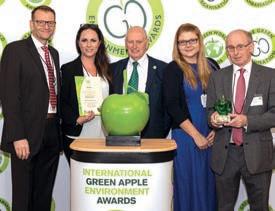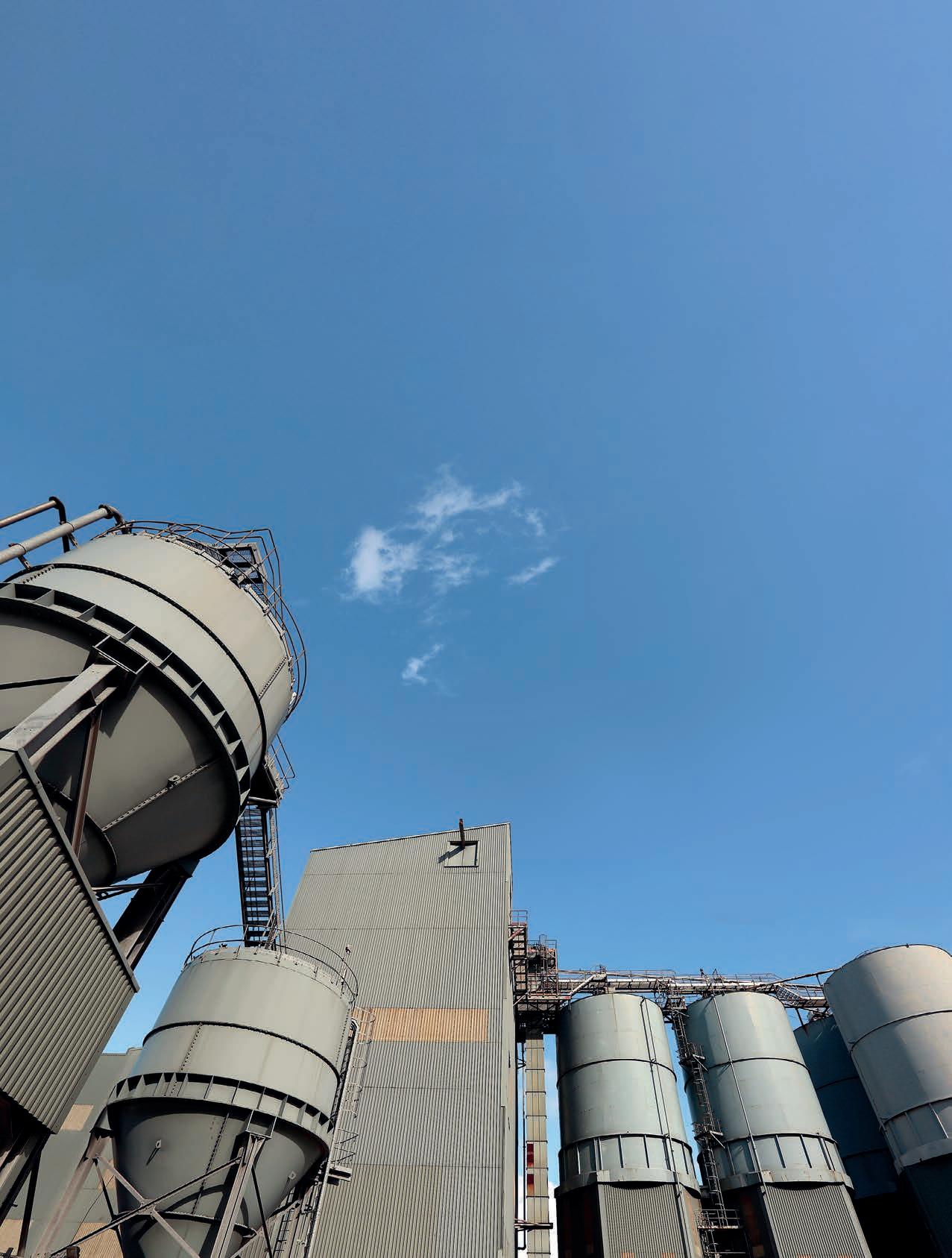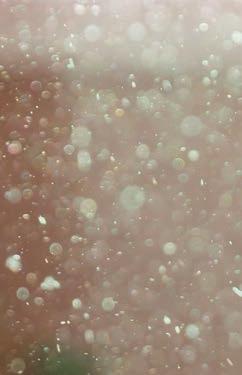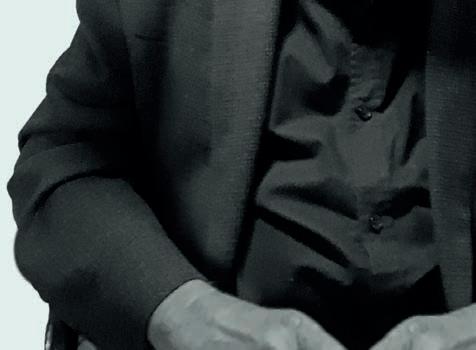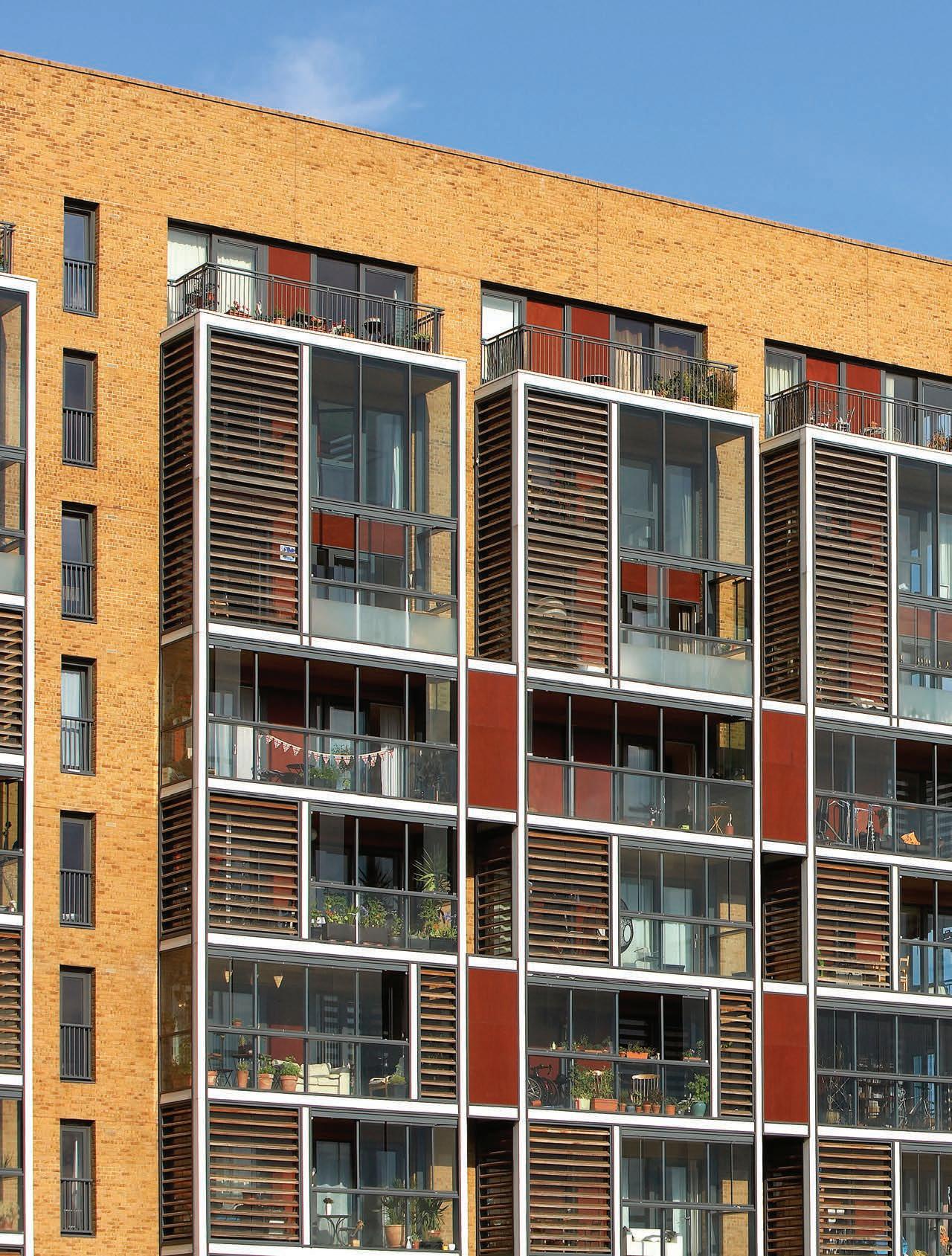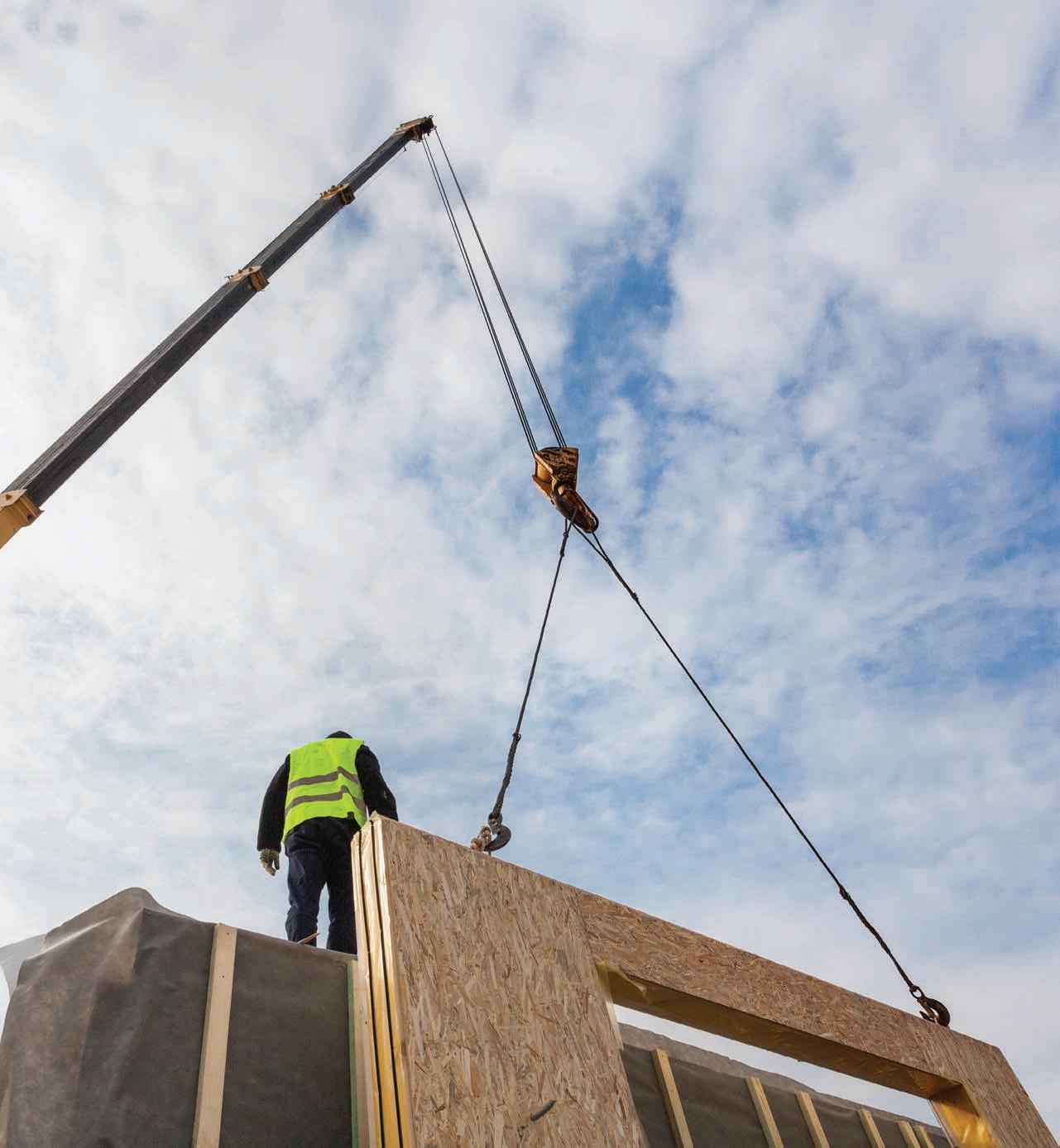
5 minute read
Blue sky thinking
Polypipe, manufacturers of piping, water and climate management systems, has won a Green Apple Environment Award for its smart roof research project, installed at the company’s plant in Aylesford, Kent. The Smart Roof 2.1 research project has been underway since 2017 and aims to determine the hydrological, thermal and biodiverse functioning of blue-green roof systems in the urban environment.
The prime goal of the system is to harvest and store as much rainwater for capillary plant irrigation as possible and only use potable (drinking) water in the case of extreme or prolonged droughts. The greening outcome is that the system has a higher urban cooling capacity, reduces rainwater discharge run-off rates to sewers and enables a wider plant species selection due to improved water availability.
The company took the decision to install a blue-green roof when re-roofi ng to test and demonstrate the viability of retrofi t green infrastructure. Not only did the blue-green roof encourage biodiversity and prove a valued leisure space for employees; the intelligent, water-management system also optimised greening, increased water usage effi ciency and reduced waste, and managed extreme weather events. It proved a micro-model of the water management challenges cities face, along with the issues of suitable, sustainable urban landscaping.
Smart system
The system comprises a drainage sub-base replacement with sedum top layer and an isolated instrumentation cell to automatically monitor and manage water supply to ensure optimum soil moisture, temperature and salinity conditions, which allows the bluegreen roof to fl ourish. The control and monitoring systems are operated remotely online via a smartphone, tablet or PC.
Capillary cones – unique to the sub-base platform – draw stored rainwater upwards to irrigate the

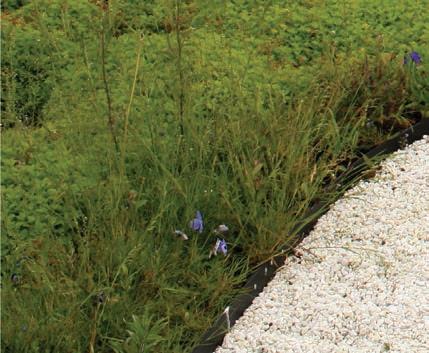
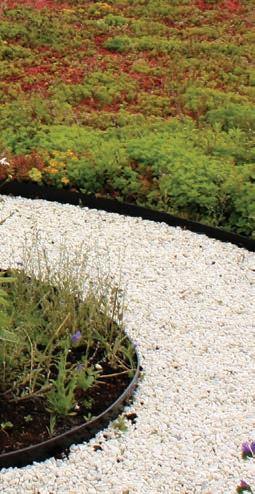

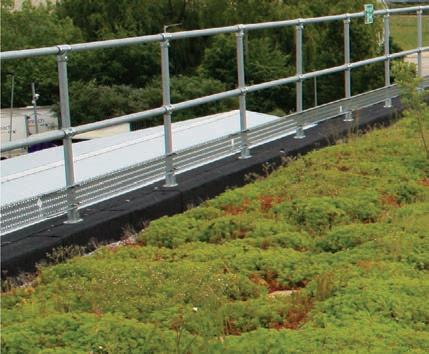

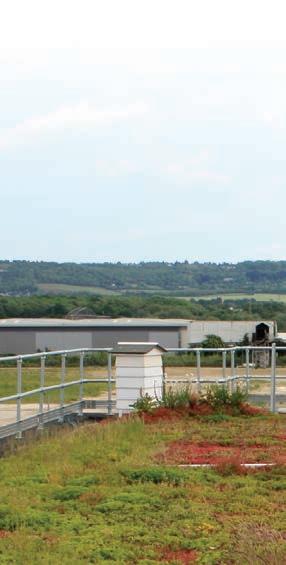

Polypipe is acknowledged as a Green Champion for its intelligent, water-management roofi ng system
blue-green roof, while sensors within the cells monitor available water levels. If a pre-determined low set-point is reached, the system operates a solenoid valve to add water from a rainwater recovery tank until the desirable level is reached. During high-rainfall events, excess water in the wet cell spills into the raft . When the tank reaches capacity, this water overfl ows to the drain.
The results of this smart management of water collection included: Higher diversity in plant and insect species Reduced average annual water shortages for sedum-dominated vegetation Increased evaporation reducing run-off and waste-water discharge to ground systems Increased building cooling capacity.

The storage of precipitation and capillary irrigation of the roof vegetation proved to be an eff ective measure for increasing total annual evaporation. Increased storage reduced average annual water shortage for

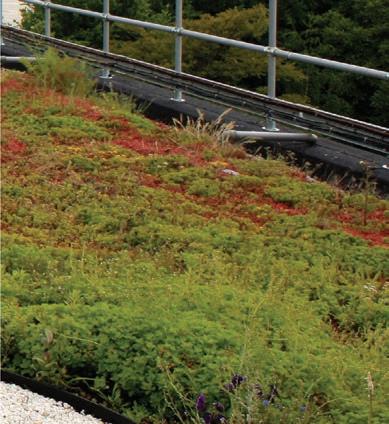
sedum-dominated vegetation from 28% to 4% and for a grass/herb vegetation from 29% to 12%.
Installing a maximum 80mm storage and capillary irrigation system increased the mean annual actual evaporation with 101mm/year (grass/herbs) and 96mm/year (sedum). This also means that hydrological performance in the sense of evaporating precipitation water instead of discharging this water into the sewer was greatly improved by the storage and capillary irrigation system.
Monthly averaged run-off from a capillary irrigated roof with 80mm storage is only half that of a conventional roof with sedum vegetation. With grass/herb vegetation, this diff erence is even larger resulting in almost no discharge in May and June, and less than one third the discharge in July and August annually. The mean annual available water for irrigation from precipitation increased to 515mm (88% of evaporation potential) for grass/ herbs vegetation and 386 mm (96% of evaporation potential) for the sedum-dominated vegetation.
Grass/herbs vegetation needs additional irrigation water during the summer months to prevent complete dehydration and a long recovery period during which the plants are not transpiring. With on average 70mm – and in dry years 150mm – of additional irrigation annually, grass/herbs vegetation becomes sustainable under the current climate assuming an 80mm storage level and capillary irrigation.
Besides the extra cooling capacity, such vegetation provides additional advantages such as a higher diversity both in plant and insect species. This creates more natural vegetation that sustains native biodiversity, making the roof look like a meadow rather than the well-known sedum-dominated vegetated roofs.
Biodiversity
Currently, no design or installation standards exist for blue-green roofs, and existing fl at roof standards somewhat contradict the blue-green roof applications. MDPI’s Evaporation from (Blue-) Green Roofs: Assessing the Benefi ts of Storage and Capillary Irrigation (at bit.ly/MDPIbluegreen) provided the only evidence to support blue-green roof thesis. For this reason, Polypipe staff and the local university carried out their own research into invertebrates and the suitability of diff erent plants for the site.
Overall fi ndings from the invertebrates study showed signifi cant activity of pollinators around fl owing plants (wet cell) compared with the rest of the roof area, and there are clear preferential trends within vegetative zones on the roof. This could well be a preference for blue-fl owering plants. However, taking into considerations the other patt erns that have been observed, the study would suggest that this is simply a result of preference for well-watered fl owering plants over the sedum mat.
A beehive has also been introduced (named the POLYnator Site) and the local HSE manager trained as the designated beekeeper. Last year even saw the fi rst collection of Polypipe honey. Staff are encouraged to increase the bee population, thereby att racting other insects and birds, to make the site more sustainable. While the project provided a valuable research model for blue-green roofs and a valuable space for wildlife, it brought wellbeing benefi ts to staff , too. Many use the seating area during the day and report a greatly improved environmental awareness.
A second research project is underway based on the Polypipe blue-green roof and will consider the use of stored water for business use (eg WCs), cooling solar panels and its insulation eff ect in winter. The Water Management Solutions Team formed in 2007 aft er identifying a need within the UK construction industry for engineered sustainable drainage solutions. It researches innovations to meet the global challenges of carbon reduction and water management.
For more information, visit polypipe.com GREEN CHAMPION
Polypipe was recognised as a Green Champion for Environmental Best Practice. The Green Organisation’s annual awards recognise, reward and promote environmental best practice. For more details, visit
thegreenorganisation.info
